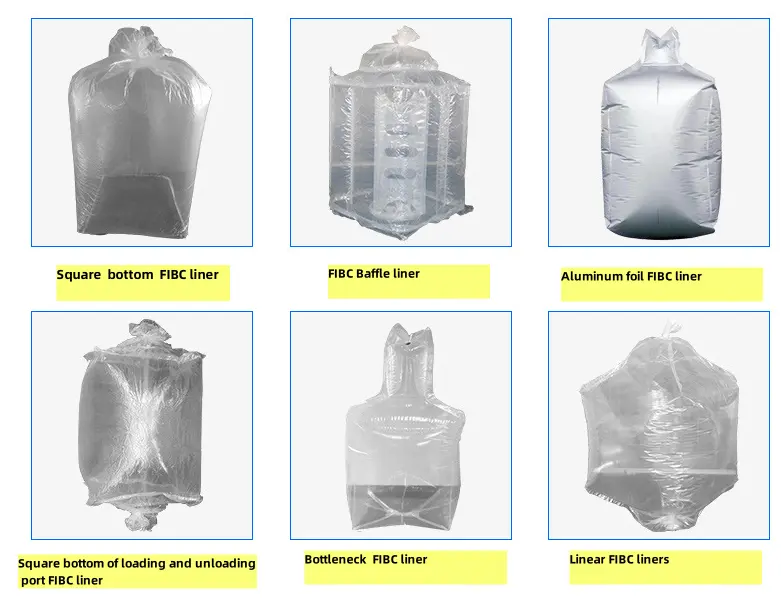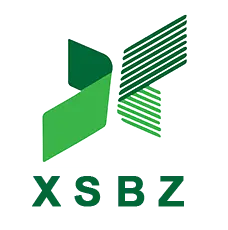In modern transportation, FIBC Liners play a very important part. With its particular advantages, this large-capacity, collapsible bag is widely used in the storage and transportation of solid and liquid goods in many industries such as chemicals, construction materials, and food. Today, let’s learn about the different types of FIBC liners and their characteristics.
Depending on the material, FIBC liners can be divided into different types. Polyethylene (PE) liners are one of the most popular types. They are made from high-density or linear low-density polyethylene and have good chemical stability and water resistance, making them suitable for packaging most dry materials. In addition, the PE material has a certain resistance to ultraviolet radiation, so this kind of bag has a longer service life than other bags, which makes this kind of lining bag have a certain service life in outdoor environments. Below are the FIBC liners produced by our factory :

Another widely used material is polypropylene (PP), especially for applications that require higher hygiene standards, such as food-grade or medical-grade product packaging. PP material has high tensile strength and easy-to-clean smooth surface, which is especially suitable for use in environments that require cleaning.
For situations where heavier loads or rougher materials are required, polyester (PET) or nylon (nylon) lined bags are a better choice. These materials have better wear resistance, tensile strength and tear resistance than the above materials, but their cost is relatively high.
In addition to materials, the designs of FIBC liners also differ in many ways. For example, with its flat-bottomed design, it supports itself and can be easily placed on the ground without the need for a tray. This design is typically used for loading and unloading chemicals that are often found in granular or powder materials.
The FIBC liners with a three-dimensional square bottom design is more suitable for liquid storage and transportation, because its bottom can stand upright to form a three-dimensional space, allowing the bag to stand stably and reducing the risk of leakage. Bags of this design are usually equipped with valves to facilitate the drainage of liquids.
Considering the needs of environmental protection and recycling, recyclable and recyclable FIBC liners will also appear on the market. These liners are designed to be emptied, cleaned and reused, using a large bag cleaning machine to better clean dry powder, lint and other impurities remaining in the large bag. This not only reduces the consumption of single-use plastic, but also reduces long-term packaging costs.
Security is also a factor that must be considered when designing FIBC liners. Therefore,many liner bags are equipped with anti-static, conductive or electrostatic discharge (ESD) protection, which is especially important when handling flammable and explosive materials. By using special materials or coatings, these FIBC liners can reduce the potential risk posed by static build-up.
When choosing FIBC liners, you should think about factors such as materials, design, safety and potential environmental impacts based on their specific needs. The right choice can not only improve logistics efficiency, but also reduce long-term operating costs while meeting growing environmental awareness.
Post time: Mar-22-2024



